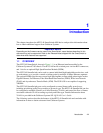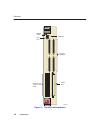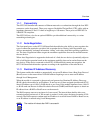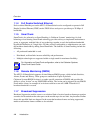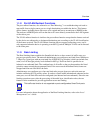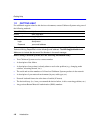
Overview
Introduction 1-3
1.1.1 Connectivity
The 6E233-49 SmartSwitch connects to Ethernet networks or workstations through the four RJ21
connectors on the front panel. These ports support Unshielded Twisted Pair (UTP) cables with an
impedance between 85 and 111 ohms at lengths up to 100 meters. These ports are IEEE 802.3u
10BASE-TX compliant.
The 6E233-49 has a slot for an optional HSIM to provide additional connectivity to various
networking technologies.
1.1.2 Auto-Negotiation
The front panel ports on the 6E233-49 SmartSwitch module have the ability to auto-negotiate the
type of connection required to provide a link to another device. During Auto-Negotiation, two
devices automatically exchange information “telling” each other what their operating capabilities
are. The Auto-Negotiation feature targets the maximum capabilities that can be reached between
the two devices.
When Auto-Negotiation is supported at both ends of a link, the two devices dynamically adjust to
full or half duplex operation based on the maximum capability that can be reached between the
two devices. If the device connected to the 6E233-49 SmartSwitch cannot auto-negotiate, the
6E233-49 SmartSwitch interface operates according to the capabilities of the other device.
1.1.3 Runtime IP Address Discovery
This feature enables the module to automatically accept an IP address from a Boot Strap Protocol
(BootP) server on the network into NVRAM without requiring a user to enter an IP address
through Local Management.
When the module is connected to the network and powered up, Runtime IP Address Discovery
(RAD) checks the module for an IP address. If one has not yet been assigned (module and 6C105
chassis IP address set to 0.0.0.0), RAD checks to see if any of the module interfaces have a link. If
so, RAD sends out Reverse Address Resolution Protocol (RARP) and BootP requests to obtain an
IP address from a RARP or BootP server on the network.
The RAD requests start out at an interval of one second. The interval then doubles after every
transmission until an interval of 300 seconds is reached. At this point, the interval remains at 300
seconds. The RAD requests continue until an IP address is received from a RARP or BootP server,
or an IP address is entered using Local Management.
NOTENOTENOTENOTE
The module will reboot after RAD is successful.









